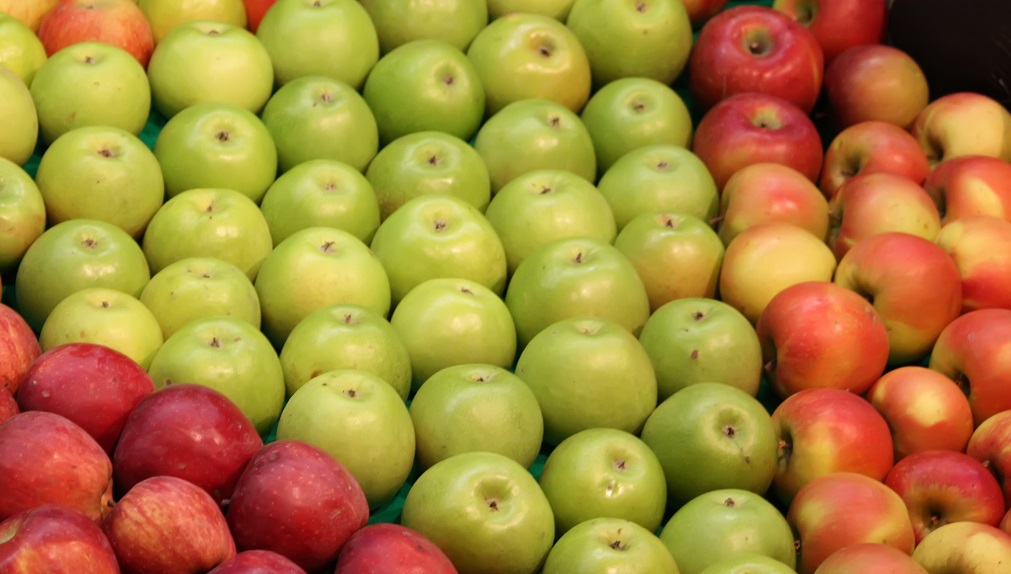Apples come from Kazakhstan, study shows

While previous studies were broader indicating the fruit originated in Central Asia, genome mapping has allowed a better understanding of where apples come from and the Silk Road's pivotal role in their domestication.
New research has found European crabapples contributed so extensively to the domestication of apples that the modern fruit is more similar to them genetically than their Kazakhstani ancestor, M. sieversii.
That's right. Apples come from Kazakhstan.
Researchers from New York's Boyce Thompson Institute (BTI), collaborating with scientists from Cornell University and Shandong Agricultural University in China, sequenced and compared the genomes of 117 diverse apple accessions, and the results were published in the journal Nature Communications.
The types of apple included Malus domestica, today's modern apple, as well as 23 wild species from North America, Europe and Asia. 
"We narrowed down the origin of domesticated apple from very broad central Asia to Kazakhstan area west of Tian Shan Mountain,” explained Zhangjun Fei, BTI professor and lead author of this study.
In addition to pinpointing the western apple’s origin, the authors were excited to discover that the first domesticated apple had also traveled to the east, hybridizing with local wild apples along the way, yielding the ancestors of soft, dessert apples cultivated in China today.
"We pointed out two major evolutionary routes, west and east, along the Silk Road, revealing fruit quality changes in every step along the way," Wei said.
Although wild M. sieversii grows east of Tian Shan Mountain, in the Xinjiang region of China, the ecotype there was never cultivated and did not contribute to the eastern domesticated hybrid. Instead, it has remained isolated all these centuries, maintaining a pool of diversity yet untapped by human selection.
"It is a hidden jewel for apple breeders to explore further," remarked first-author Yang Bai.
As the apple traveled west along the Silk Road in the hands of travelers, trees grew from dropped seeds and crossed with other wild apple varieties, including the incredibly sour European crabapple, Malus sylvestris.
The authors reported this hybridization gave us new apples that are larger and fuller in flavor, with a crispy firmness that gives them a longer shelf life.
"The modern domesticated apples have higher and well-balanced sugar and organic acid contents. That is how the apple started to become a popular and favored fruit," Bai said.
"For the ancestral species, Malus sieversii, the fruits are generally much larger than other wild apples. They are also soft and have a very plain flavor that people don’t like much."
A sizeable discovery with big potential
Interestingly, while other fruits were selected over time from much smaller predecessors - such as tiny wild tomatoes - the selection process appears to have been different for apples.
"This is not quite the case for apple. Its domestication started with a medium to large-sized fruit,” said Bai.
"It has great potential for further enlarging fruit size in breeding programs."
By comparing the many different apple genomes, the researchers were able to find evidence supporting two different evolutionary steps contributing to apple’s size increase – one before, and one after domestication.
The large size of Malus sieversii compared to other wild apples gave it a great advantage for domestication. It had already evolved to a suitable size before it was even cultivated, likely making it more attractive to growers who would then not need to spend much effort selecting for larger fruits.
Such a lack of size selection also means that the genes responsible for size increase still retain a variability that holds potential for future selection. But it can also make identification of the size-associated genes difficult.
Despite this, the extensive breadth of the new study allowed the researchers to identify several genetic markers underlying the fruit size increases, which is great news for breeders who might want to further increase the apple’s girth.
Headline photo: www.shutterstock.com






































